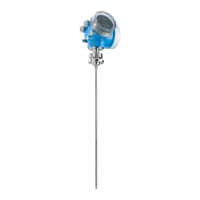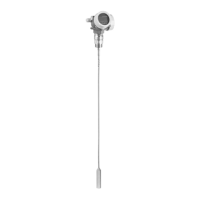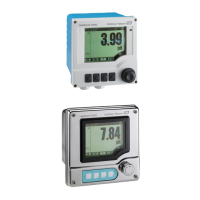Technical data Levelflex M FMP40 and FMP45
68
Cleaning the probe Depending on the application, soilings or sediments can accumulate on the probe. A thin, even layer
only influences measurement slightly. Thick layers can dampen the signal and then reduce the
measuring range. Heavy, uneven build-up, adhesion e.g. through crystallisation, can lead to
incorrect measurement. In this case, we recommend that you use a non-contact measuring
principle, or check the probe regularly for soiling
Electromagnetic compatibility When installing the probes in metal tanks:
• Interference emission to EN 61326, Class A equipment.
• Interference immunity to EN 61326, Annex A (Industrial area) and NAMUR Recommendation
NE 21 (EMC)
The measured value can be affected by strong electromagnetic fields when installing rod and rope
probes without a metallic wall, e.g. plastic tanks. For interference emission according to EN 61326,
we fulfil the requirement for Class A equipment.
• Interference emission to EN 61326, Class A equipment.
• Interference immunity: the measured value can be affected by strong electromagnetic fields.
11.1.5 Operating conditions: Process
Process temperature range FMP40
The maximum permitted temperature at the process connection (see Figure for measuring point) is
determined by the O-ring version ordered:
!
Note!
The medium temperature can be higher.
FMP45
The maximum permitted temperature at the process connection (see figure measuring point) is
determined by the process connection ordered:
L00-FMP45xxx-05-00-00-en-001
O-ring-material min. Temperature max. Temperature
FKM (Viton) -30 °C/-22 °F +150 °C/302 °F
EPDM -40 °C/-40 °F +120 °C/248 °F
FFKM (Kalrez) -5 °C/23 °F +150 °C/302 °F
measured
here
FMP45: process pressure depending on the process temperature
350
300
400
400
400
400
380
0
50
100
150
200
250
300
350
400
450
1234567
-60oC 0oC 100oC 200oC 300oC 400oC
Pressure [bar]
-200
o
C -100
o
C 0
o
C 100
o
C 200
o
C 300
o
C 400
o
C
280 °C Tem

